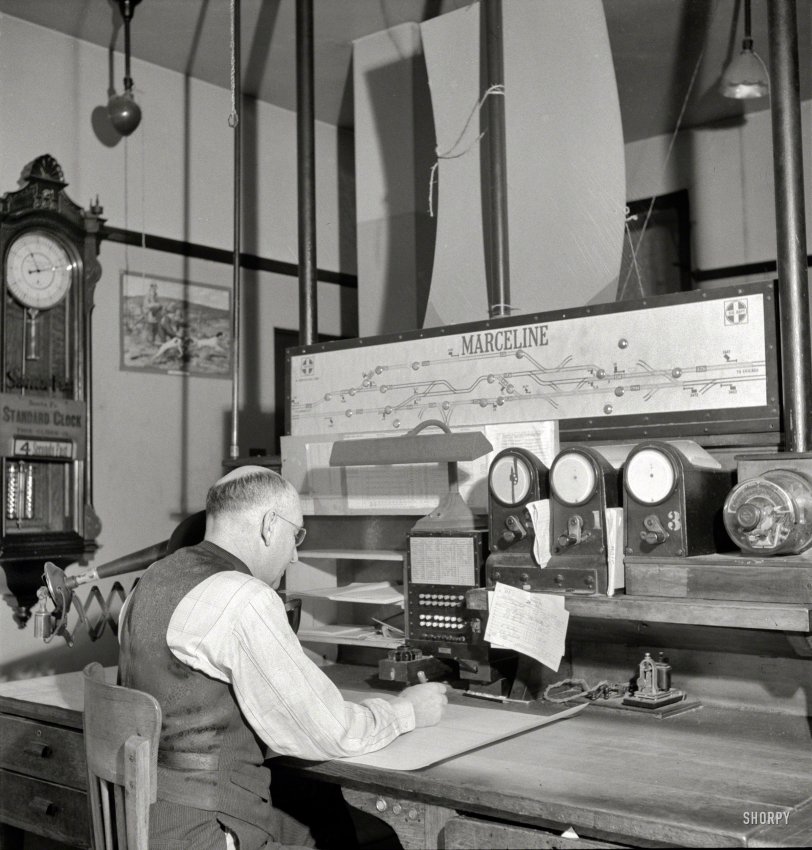


Framed or unframed, desk size to sofa size, printed by us in Arizona and Alabama since 2007. Explore now.
Shorpy is funded by you. Patreon contributors get an ad-free experience.
Learn more.

- Baldwin 62303
- Baldwin VO-1000
- Cold
- No expense spared
- Tough Guys
- Lost in Toyland
- And without gloves
- If I were a blindfolded time traveler
- Smoke Consumer Also Cooks
- Oh that stove!
- Possibly still there?
- What?!?
- $100 Reward
- Freeze Frame
- Texas Flyer wanted
- Just a Year Too Soon
- WWII -- Replacing men with women at the railroad crossing.
- Yes, Icing
- You kids drive me nuts!
- NOT An Easy Job
- I wonder
- Just add window boxes
- Icing Platform?
- Indiana Harbor Belt abides
- Freezing haze
- Corrections (for those who care)
- C&NW at Nelson
- Fallen Flags
- A dangerous job made worse
- Water Stop
Print Emporium
Mission Control: 1943

March 1943. "Marceline, Missouri. A dispatcher at work in the Atchison, Topeka & Santa Fe Railroad offices." We could use one of those desks at Shorpy Central. Photo by Jack Delano for the Office of War Information. View full size.
Launch Control
I wonder what the three buttons under his elbow were for?
[Cream, Sugar, Lemon. - Dave]
Time out
For about two years (97-99) I worked the lever operated interlocking at Springhill, Indiana on the Soo Line. We controlled movement of both Soo and CSXT traffic there, and the only time we engaged the timer was when an established ‘proceed’ route had to be changed. As I recall it took about eight minutes for a route to ‘time out,’ the longest eight minutes one could ever experience. Signals in advance of the interlocking gave the hogger on an approaching train a pretty good idea of what to expect at the interlocking, giving him the opportunity to set up his train handling for the plant. The timing device, for instance, prevented us from changing switches from a main line movement to a crossover move (requiring much slower speeds) when the train crew was rightly expecting to run straight through at maximum speed. Timers are still part of the most sophisticated CTC boards today, but they’re controlled by computer software. I suspect the three white faced devices controlled the train order boards outside the dispatchers office, which the timing apparatus was linked to.
Thinking Time
The glass globe with the knob on the far right is a timer. When I visited an interlocking tower at a major junction, the operator explained that he had to set the timer before he could set a route. Then each change he made was locked down until the timer expired, which was after the next train was due. This made him think through his actions, and prevented last-minute corrections. I suppose it serves the same purpose here. I wonder if the three units to the left of it record the times that changes were made?
[Here, with a survivor, from Union Switch & Signal. -tterrace]

























On Shorpy:
Today’s Top 5